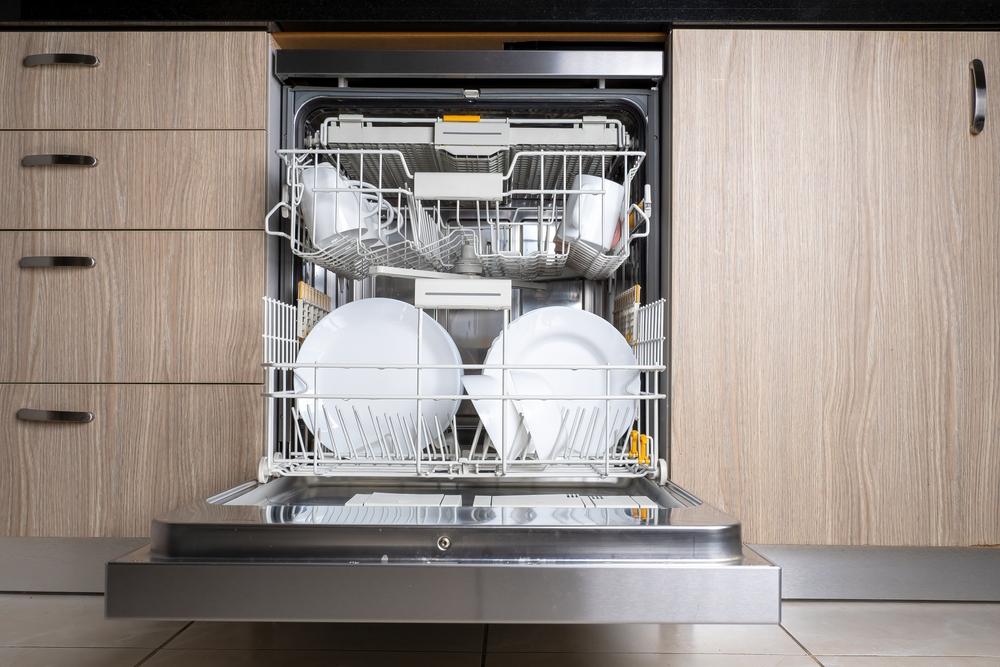Even the cleanest house can develop mystery odors, often coming from the very appliances we use to keep things tidy. The nose twitches, then wrinkles; the brain asks, “Where is that smell coming from?”
Washing Machine 101
While front-load washing machines are considered superior in many ways, they can be very susceptible to mildew and smells. As high-efficiency front-load washers only fill the bottom half of the washtub with water—the turning drum tumbles clothes through this reduced water to clean them—it increases the chance of soap scum buildup, which can lead to mold and mildew. This is particularly true when non-high-efficiency (i.e., regular) detergent is used, as there is not enough water to completely rinse it away in most cases. Cleaning it is similar to cleaning a top load washer, with the addition of pulling back the rubber door seal and wiping it down with full-strength white vinegar.Mix 1/4 cup of baking soda with 1/4 cup water and pour it into the detergent dispenser. Pour two cups of white vinegar into the drum if cleaning a front load machine; use six cups of white vinegar for a top load machine, as it fills the drum with more water. Set the water temperature to hot, and run an empty load. If you like, you can pause the washer after it fills and agitates for 30 minutes to let the mixture soak. After the empty load is complete, get rid of any residual vinegar smell by wiping down the drum with a wet rag. If this doesn’t work, you may want to try bleach: Use two cups for a front load machine and four cups for a top load machine. After the machine fills, pause it for 30 minutes, then allow it to complete the cycle. Then run a “rinse only” cycle to remove all the bleach. Never use other cleaners when using bleach.
If the laundry room still has a particularly noxious musty or otherwise foul smell, it could be a clogged washing machine drain. In this case, add two cups of vinegar to the detergent dispenser and run an empty load. After the load is done, remove the drain hose from the drain trap and pour boiling water down the trap.
To keep future odors down, wipe down the interior after each wash, including the rubber seal around a front-load door. Leave the door open when not in use and the dispenser tray open to fully dry.

Dishwasher Diagnostics
When the powerhouse that gets pots, pans, dishes, and cutlery sparkling clean smells noxious, there are five things to check. The first and most likely culprit is the filter. Before 2010, dishwashers were equipped with self-cleaning filters that ground up food particles so they could be safely washed away. Newer models feature a filter that needs to be cleaned periodically. Follow the instructions in the user’s manual for your particular model to remove it. Remove any debris and rinse thoroughly, soaking it in warm, soapy water if needed. For stuck-on particles, gently scrub it with a soft bristle brush.If there’s still an odor, fill a bowl with two cups of white vinegar and set it on the bottom rack. Turn off heat dry (or turn on air dry, if applicable) and run an empty wash.
The third suspect is the gasket seal, which can harbor mold and mildew leading to a musty aroma. Check the instruction manual, as some manufacturers say to clean them with only warm water. Otherwise, clean and deodorize the seal with an old soft toothbrush dipped in a solution of a half cup of vinegar in three cups of hot water. Wiping down the seal with a damp cloth regularly will reduce the need for future maintenance.
If the dishes aren’t getting as clean as usual, it could be a sign that the spray arms are clogged. Visually inspect for clogged holes, clearing them with a toothpick or needle as needed. Repeat for all spray arms.
The final potential problem is the drain hose, especially if you notice water building up at the bottom of the machine. Hoses can easily become kinked, particularly if they run through cabinetry jammed full with cleaning supplies. Some manufacturers use an opaque hose that allows easy inspection for clogs. If not, remove the hose and clear it with a drain snake. Reassemble, and you should be good to go.






